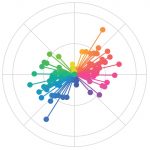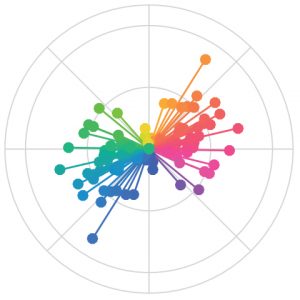Schloss, K. B., Lessard, L., Racey, C., & Hurlbert, A. C. (online 2017). Modeling color preferences using color space metrics.
Vision Research. Link
Schloss, K. B. & Palmer, S.E. (2017). An ecological framework for temporal and individual differences in color preferences. Vision Research, 141, 95-108. Link
Schloss, K. B., & Heck, I. A. (2017). Seasonal changes in color preferences are linked to variations in environmental colors: A longitudinal study of fall, i-Perception, 8, 6, 1-19. PDF
Schloss, K. B., Nelson, R., Parker, L., Heck, I. A., & Palmer, S. E. (2017). Seasonal variations in color preference. Cognitive Science, 41, 6, 1589-1612. Link
Yokosawa, K., Schloss, K. B., Asano, M., & Palmer, S. E. (2016). Ecological Effects in Cross-Cultural Differences Between U.S. and Japanese Color Preferences, Cognitive Science, 40, 7, 1590-1616.Link
Schloss, K. B. (2015). Color preferences differ with variations in color perception. Trends in Cognitive Science, 19, 554-555. Link
Schloss, K. B., Hawthorne, D. & Palmer, S. E. (2015). Ecological influences of individual differences in color preferences. Attention, Perception and Psychophysics, 77, 2803-2816. Link
Strauss, E. D., Schloss, K. B., & Palmer, S. E. (2013). Color preferences change after experience with liked/disliked color objects. Psychonomic Bulletin & Review, 20, 5, 935-943. Link
Taylor, C., Schloss, K. B., & Palmer, S. E., & Franklin, A. (2013). Color preferences in infants and adults are different. Psychonomic Bulletin & Review, 20, 5, 916-922. Link
Schloss, K. B., Poggesi, R. M., & Palmer, S. E. (2011). Effects of university affiliation and “school spirit” on color preferences: Berkeley vs. Stanford. Psychonomic Bulletin & Review, 18, 498-504. PDF
Palmer, S. E. & Schloss, K. B. (2010). An ecological valence theory of color preferences. Proceedings of the National Academy of Sciences, 107, 8877-8882. PDF



 Our new article on using color space metrics to describe and predict patterns of color preference is now published online in Vision Research.
Our new article on using color space metrics to describe and predict patterns of color preference is now published online in Vision Research.  The Psychology Department at the University of Wisconsin – Madison honored Katie Foley with the 2017 Outstanding Undergraduate Research Award for her work in our lab. Congratulations Katie, we are so excited for you!
The Psychology Department at the University of Wisconsin – Madison honored Katie Foley with the 2017 Outstanding Undergraduate Research Award for her work in our lab. Congratulations Katie, we are so excited for you! NPR’s 13.7: Cosmos & Culture featured our article on
NPR’s 13.7: Cosmos & Culture featured our article on  The Schloss Visual Perception and Cognition Lab welcomes our new Postdoc, Chris Racey! Prior to arriving at UW-Madison, Chris was a Post-doctoral Research Fellow working with Prof. Anna Franklin in the Sussex Colour Group (University of Sussex). Chris’s research focuses on color cognition and the neural representation of color. He investigates various aspects of color processing, including color preference, color naming, and low level visual representations, using behavioral, psychophysical and neuroimaging methods.
The Schloss Visual Perception and Cognition Lab welcomes our new Postdoc, Chris Racey! Prior to arriving at UW-Madison, Chris was a Post-doctoral Research Fellow working with Prof. Anna Franklin in the Sussex Colour Group (University of Sussex). Chris’s research focuses on color cognition and the neural representation of color. He investigates various aspects of color processing, including color preference, color naming, and low level visual representations, using behavioral, psychophysical and neuroimaging methods. Our new article reporting on how color preferences change with the seasons was just published in Cognitive Science’s Early View online.
Our new article reporting on how color preferences change with the seasons was just published in Cognitive Science’s Early View online.
 If you are interested in applying to be a graduate student in the Schloss Visual Perception and Cognition Lab at the University of Wisconsin – Madison, please apply through the Department of Psychology
If you are interested in applying to be a graduate student in the Schloss Visual Perception and Cognition Lab at the University of Wisconsin – Madison, please apply through the Department of Psychology  Karen Schloss is the newest addition to the Living Environments Laboratory theme at WID. She was previously located at Brown University where she was the Principal Investigator at the Visual Perception and Cognition Lab. As Schloss unpacked her office at WID, we inquired about her Tools for Discovery.
Karen Schloss is the newest addition to the Living Environments Laboratory theme at WID. She was previously located at Brown University where she was the Principal Investigator at the Visual Perception and Cognition Lab. As Schloss unpacked her office at WID, we inquired about her Tools for Discovery.